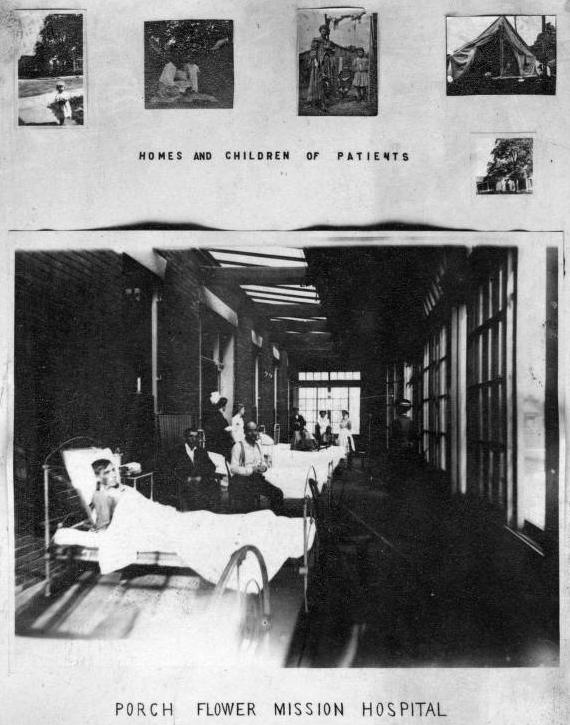The idea for this healthcare charity dates to 1876 when a group of young women took flowers to City Hospital (see ) patients. Founded by Alice Wright and officially incorporated in 1892, the Flower Mission’s major activity was visiting the sick poor in their homes and providing necessary assistance to them. During its history, the organization undertook several projects and raised money for these projects through lawn fetes, fairs, parades, doll fairs, and balls.

In the course of their work, Flower Mission members saw individuals who needed nursing and medical care. In 1883, they convinced City Hospital to establish a training school for nurses. Two years later, the Flower Mission hired a district nurse to provide medical care for the sick poor.
In their work, members became distressed at the lack of proper care for sick children. With a major donation from , the Flower Mission opened Eleanor Hospital in 1895 to care for poor children under age 15. The hospital was named in memory of Lilly’s daughter, Eleanor. Operating the hospital, however, was expensive and in 1909, upon the recommendation of a medical advisory board, Eleanor Hospital closed its doors.

Beginning in 1901, the Flower Mission focused on providing care for the terminally ill (usually cancer or tuberculosis patients) and in 1903 built a hospital to accommodate them. The hospital was torn down in 1923 to make room for a new wing for City Hospital, and the Flower Mission temporarily used a nearby building for these purposes. When the fire marshal condemned the structure in 1930, the Flower Mission raised money for a new facility. The 100-bed Flower Mission Memorial Hospital was dedicated in 1937 to treat tuberculosis patients and continued to operate into the early 1960s.
After the construction of this hospital, the Flower Mission became less active. The Flower Mission furnished special rooms at its hospital, provided patients and staff with parties and treats, and funded new medicine and equipment. For example, it paid for patients to receive the new tuberculosis drug streptomycin in 1947. The organization also provided grants to other local healthcare charities. The organization disbanded in 1993.

Help improve this entry
Contribute information, offer corrections, suggest images.
You can also recommend new entries related to this topic.

